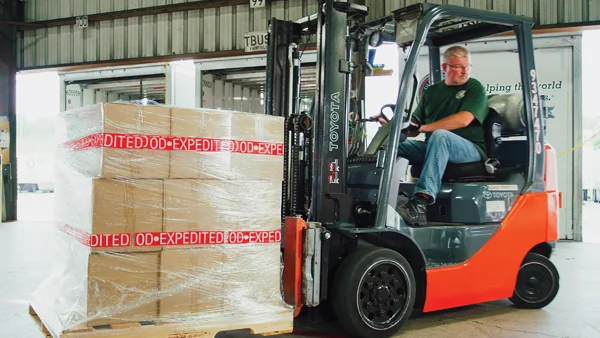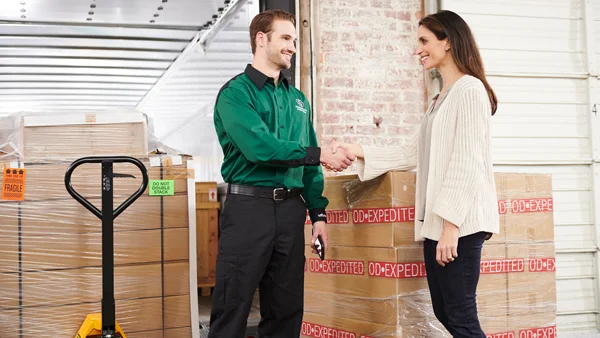Growth is the typical goal for most manufacturers and retailers, and the mindset of “bigger is better” pervades the business landscape. There are good reasons for this. Large customer bases are good, better name recognition is beneficial, and larger operations allow companies to take advantage of economies of scale. In recent years, however, companies are finding that aiming small can also pay dividends, at least when it comes to the footprint of their retail stores.
Many major retailers that operate large-format stores are finding a different way to achieve scale, by launching smaller “outpost”-style versions of their stores. Target, Macy’s, IKEA, Nordstrom Rack, Best Buy, Whole Foods, Ethan Allen, and others have all launched retail outlets along these lines, allowing them to open in more places, enjoy lower per-store overhead, operate closer to consumers who are working from home, and offer experiences tailored to specific, local markets.
“We’ve historically seen big box retail stores in locations with 125,000 square feet or more,” said Greg Plemmons, OD’s Chief Operating Officer. “But over the past five years we’ve seen efforts from retailers to open stores under 50,000 square feet, and sometimes down into the 5,000 to 15,000 square foot range. This allows them to not only go into tight urban markets where real estate is costly, but also move further out into the suburbs and even rural areas, ultimately reaching far more customers.”
The shift to meet this need of smaller retail spaces has been made possible by significant advances in logistics operations over recent years, including increasingly digitized operations, use of advanced analytics, and the advent of Micro-Fulfillment Centers (MFCs). MFCs are small-scale warehouses in strategic locations in urban, suburban, or rural areas that make it possible to move goods quickly to smaller stores on demand. This removes the need for large retail footprints and extensive on-site inventory. Today the MFC market is worth more than $6B and is expected to more than triple in size by 2029.
The resulting smaller stores represent a new hybrid that unites the scale and power of large brick-and-mortar operations with the agility of ecommerce. But MFCs also represent a new shipping dynamic for manufacturers and suppliers. Shipments tend to be smaller and more frequent. Because shelf space is limited compared to the traditional format, retailers are requesting smaller size cartons of product so that they can carry less in inventory on the shelf. This requires retooling of lines to enable these cartons. Additionally, some shippers may need to shift their mode of transportation from full truckload shipping (TL) to less-than-truckload (LTL) to meet these changing patterns. So, it will be important for shippers to work with transportation partners who are not only experienced with this new dynamic but have the operational flexibility and digital fluency it requires.
Understanding Micro-Fulfillment Centers
MFCs speed up order fulfillment by shortening delivery routes and reducing shipping times, by acting as mini-warehouses for multiple area stores. This allows large retailers to operate multiple, small-footprint stores, places where customers can plan, browse sample merchandise for fast fulfillment, pick up “click and collect” online orders, or perform easy returns.
MFCs can be standalone or attached to larger-footprint retail outlets, and are often highly automated, using robots, and other technologies to increase efficiency. Overall, though, MFCs are designed to handle smaller amounts of merchandise that arrive more frequently, often via orders generated automatically through digital systems. They are part of a broader trend across retail logistics towards digitization, advanced analytics, and forecasting using AI and Machine Learning.
Working with Micro-Fulfillment Centers
If you do business with a retailer that has an existing or expected MFC strategy, there are several factors that can prepare you for the future. First, make sure you have nimble, flexible systems and partners in place that can fulfill both large and small orders at any cadence required. This may seem daunting, but digital systems are especially well suited to these tasks.
“The retail world moves at an ever-quickening pace with each passing year,” said Plemmons. “Manufacturers may need to adjust the mode of transportation they typically use. More frequent orders of lesser quantities are a trend we’re hearing from our customers. Shipments that historically may have been a truckload are now moving to less-than-truckload.”
The increased agility only matters, however, if you are working with a carrier who can move in complete sync with your operations. Carrier reliability rates become more important as the pace of shipping increases, as does flexibility within a carrier’s transport network. Connecting your system to your carrier’s system through APIs is a powerful way to turbocharge your shipping process, speeding communication times and reducing errors.
“The holy grail for retailers is total digitization of everything except the trucks and pallets,” said Ed Garner, National Accounts Director for OD. “When a consumer buys a product, the retailer’s restocking signal goes out automatically to the manufacturer, which triggers a shipping order to the carrier. Everything is scheduled and managed automatically with total visibility. The only time a human has to get involved is when the system detects an anomaly. In a system like this, every piece of the supply chain gets more efficient, boosting both productivity and profits.”
Choose Reliability and Capacity
As retailers shift their fulfillment strategy, shippers should partner with a carrier that has both adequate capacity and reliable service.
- Capacity. Carriers must be able to manage increased shipment volumes and have the flexibility to scale operations as needed. Retailers often face fluctuations in demand, making it vital to work with a carrier that can adapt to surges without compromising service quality. This flexibility allows for seamless operations during peak seasons and ensures that distribution networks remain fluid and efficient. Choosing a carrier with robust capacity ensures continuity in the supply chain, prevents delays, and supports retailers in meeting their end consumers' expectations without disruption.
- Reliable Service. Consistency in delivery times is critical for retailers using MFCs as these systems rely on precise timing to keep inventory flowing smoothly. A reliable freight carrier helps minimize disruptions, such as late shipments or delivery errors, which can negatively impact both operations and customer satisfaction. Beyond timeliness, dependable service fosters trust and allows retailers to maintain their commitments to customers and strengthen long-term relationships. By prioritizing carrier reliability, businesses gain a competitive edge, as they can confidently promise and deliver fast, accurate fulfillment. This assurance builds stability and resilience in the supply chain, enabling sustained success.
It’s clear that the trend toward MFCs in the retail sector will have a significant impact on manufacturers’ shipping strategies. Done correctly, however, this can be a positive shift that unlocks value and reduces inefficiency.
Recommended Content
To find out more about how MFCs are impacting shippers, and what you can do to prepare yourself, our dedicated team members are here to help, backed by Old Dominion’s state-of-the-art technology and services. Call an OD Solution Specialist today at 800-235-5569 or email us at email us at Customer.Service@odfl.com for a response within 24 hours.


